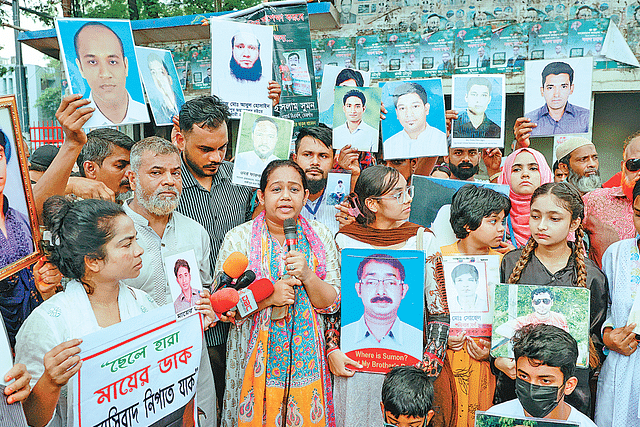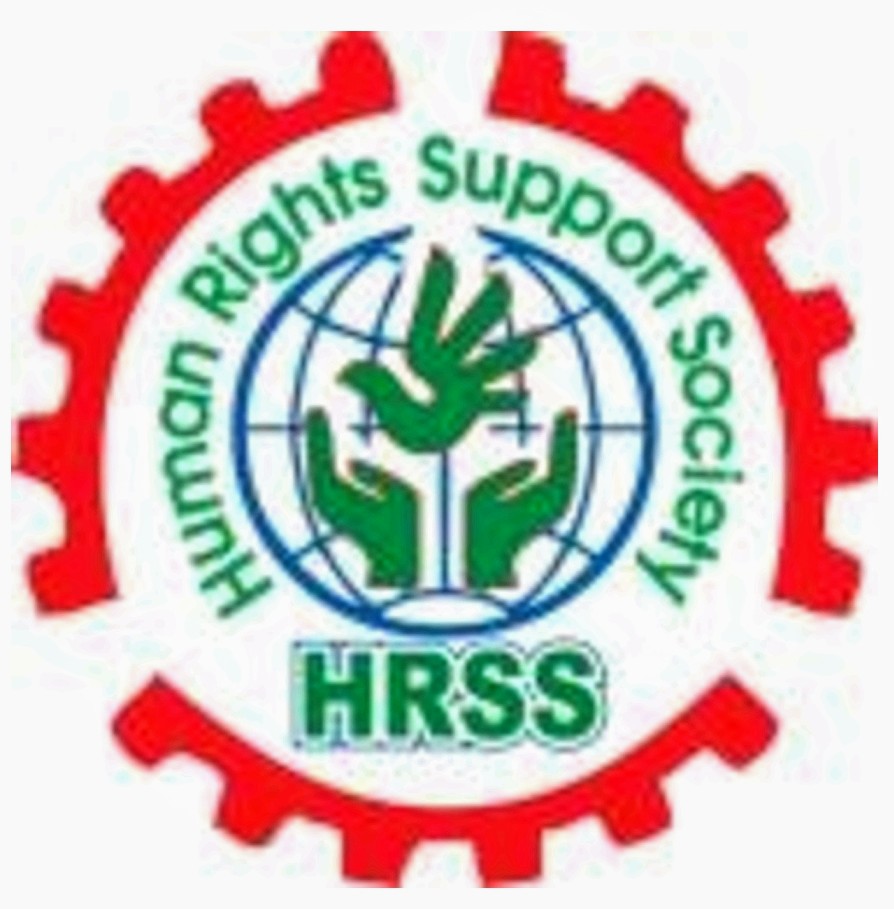In these clandestine detention centers, survival itself was a form of relentless torment. Detainees, who were often blindfolded and handcuffed with their heads covered by hoods, were transported to undisclosed locations. Within the confines of these small, windowless rooms, bright lights remained illuminated continuously, erasing any distinction between day and night. At times, the lights were abruptly turned off, plunging the space into complete darkness, while the deafening noise of an exhaust fan rendered all external sounds inaudible.
Several individuals, who were released from these secret detention cells both before and after the collapse of Sheikh Hasina’s government amid a wave of student and public protests, have recounted their harrowing experiences. They reported that existence in these unknown detention centers was a continuous ordeal, filled with the constant fear that they might be taken away to face death at any moment.
Numerous victims have disclosed that they endured severe physical torture immediately upon being detained. Some were taken to torture chambers, where, while blindfolded and shackled, they could hear the cries of others being tortured as they were escorted to the toilets. Sources focusing on enforced disappearances suggest that individuals who were detained for extended periods were held in these secret detention cells, while others were killed shortly after being taken away or within a few days. For instance, the 2014 case of the seven murders in Narayanganj revealed that the victims were suffocated with plastic bags wrapped around their faces; after their abdomens were slit, their bodies were disposed of in the river with cement or heavy objects tied to them. Some detainees were later shown as arrested in various cases, while the bodies of some were found, and others remain missing.
Following Sheikh Hasina’s ascent to power, the enforced disappearance of leaders and activists from opposition political parties, as well as targeted individuals, saw a marked increase starting in 2010. This practice escalated significantly before the January 5, 2014, elections. Despite allegations from the outset implicating state forces in these incidents, the government at the time dismissed these claims. In some cases, dismissive remarks suggested that the missing individuals were “hiding from creditors.” Following the fall of Sheikh Hasina’s government on August 5, amid a popular uprising, there has been a strong demand for the return of missing individuals, the closure of secret detention cells, and the prosecution of those involved.
Against this backdrop, August 30 is being observed as the International Day of the Victims of Enforced Disappearances. According to the human rights organization Ain o Salish Kendra, from 2007 to 2023, a total of 629 individuals have been victims of enforced disappearances. At various times, the bodies of 78 individuals were recovered, 59 were released after abduction, and 73 were later shown as arrested, while the whereabouts of the remaining individuals remain unknown.
On August 18, “Mayer Dak,” an organization representing the relatives of the disappeared, submitted a list of 158 individuals who remain missing since 2009 to the Director General of the Directorate General of Forces Intelligence (DGFI). Although families have long campaigned for the return of the missing, the issue of secret detention centers only came to the forefront two years ago, following an August 2022 report titled “Aynaghar: The Secret Detention Cell of DGFI” by Sweden-based media outlet Netra News. The chilling stories of “Aynaghar” were revealed through the accounts of several individuals, including a former army officer who had been released from these cells.
Providing insight into the name “Aynaghar” (House of Mirrors), former Lieutenant Colonel Hasinur Rahman, who was abducted twice, mentioned that the guards would occasionally mockingly say, “You are in Aynaghar.” The term “Aynaghar” is a metaphorical name, signifying a place where one sees no one but oneself. The Sheikh Hasina government never acknowledged the existence of these secret detention cells or the occurrence of enforced disappearances. Despite appeals from international organizations, including the United Nations, these concerns were ignored; however, the current interim government has indicated at its highest levels that measures will be taken on this issue.
On August 6, the day after Sheikh Hasina left the country, three individuals who had been missing for an extended period were released from these secret detention cells. They included former Brigadier General Abdullahil Aman Azmi, lawyer Ahmad Bin Kasem (Arman), and Michael Chakma, a leader of the regional organization People’s Democratic Front (UPDF) of the Chittagong Hill Tracts. The first two had been held in these secret detention cells for nearly eight years, while the latter had been detained for more than five years.
Michael Chakma described to Prothom Alo that “inside the four walls without light or air, we were not given enough food. I was in such a state of mental torment that I told them it would be better to kill me than to keep me alive in this manner. I still cannot sleep due to the horror of that torture. I get startled at any sound.”
Over the past 15 years, the fear of being detained in secret detention centers has been the greatest deterrent against protesting or criticizing the ruling class. Those who were taken there lived like the living dead, and most who have returned from these secret detention centers have not yet fully recovered mentally. Prothom Alo has spoken to several others who had been released earlier, and they recounted enduring unimaginable suffering while in captivity. The rooms where detainees were kept were surrounded by large exhaust fans that ran continuously, producing such a loud noise that no outside sounds could be heard. Many detainees could not even sleep properly. When the fans were turned off, they could hear loud screams and cries, and they believe that the sounds of other prisoners being tortured were deliberately played for them to hear.
Those who have returned from the secret detention centers also recounted that the rooms they were kept in were extremely small. After placing a 3-by-7-foot bed in these rooms, there was only about 3-4 feet of space left. There were no toilets inside, and most rooms were damp and dirty, infested with bedbugs and mosquitoes. In some adjacent rooms, a slight glimpse of daylight was visible through the ventilators, but the inner rooms were pitch dark. If the electricity went out, one could not even see their own body.
The detainees were provided with old clothes, and the beds were covered with dirty sheets. A single toilet was available for four to five rooms, and a detainee could go to the toilet four to five times a day. Even then, they were blindfolded and handcuffed when leaving the room, and the toilet door had holes to monitor their movements. No sandals were provided, so they had to walk barefoot. Some of those who had been released from these secret detention centers spoke of enduring unimaginable hardships. The rooms where the detainees were kept were surrounded by large exhaust fans that were constantly running, producing such a loud noise that no outside sounds could be heard. Some couldn’t even sleep properly. When the fans were turned off, they could hear loud screams and cries, and they believe that the sounds of other prisoners being tortured were deliberately played for them to hear.
Former army officer Hasinur Rahman, who was detained twice in Aynaghar, described the torture: “At first, when I arrived in the room, my eyes were tightly blindfolded. Then I was taken to the torture cell. There, my hands and feet were tied to a chair. Some were hung, others had their nails pulled out, and the torture varied according to the guards’ will. When someone came back crying from the torture, I knew they had been tortured. Detainees were tortured in this way once a month.”
Those released from the secret detention centers stated that while detained, most had given up hope of survival. After years in these centers, some thought they might die there. Although some were released while Sheikh Hasina was in power, the torture they witnessed left them too scared to speak out afterward.
Location and Management of Secret Detention Centers
The precise number of Aynaghar or secret detention centers is still unknown. However, the accounts of released individuals suggest these were operated under an institutional setup. Some stated that the medicines, food, books, and other items provided bore the logo or inscription of the Ministry of Defense. Additionally, the behavior and speech of the guards, doctors, barbers, and food suppliers indicated that they were associated with the armed forces or intelligence agencies.
Former army officer Hasinur Rahman, who was detained twice in Aynaghar, told Prothom Alo that during the Pakistan era, there were rooms for a Joint Interrogation Cell (JIC) in a building inside the cantonment near Kochukhet. These abandoned rooms were used to torture many people during the time of the caretaker government in 2007. After Sheikh Hasina came to power, these rooms were fully utilized as detention cells and torture cells. Besides, RAB had its own secret detention cells for short-term detentions. There were also instances of using army interrogation cells as detention centers.
Regarding the location of Aynaghar or the mentioned secret detention center, Hasinur Rahman said, “The location of Aynaghar is about 30-40 yards behind the DGFI office in Kochukhet, on the south side. There are two buildings there, one single-story with an 18-foot height from the Pakistan era and a double-story building with a 20-foot height. There was also a mosque nearby. The new building was constructed in 2009. The new building has 10 rooms, and the old building has 17 rooms.” Hasinur Rahman added, “Later, when I became vocal about this, both buildings were covered with large tarpaulins to prevent satellite










